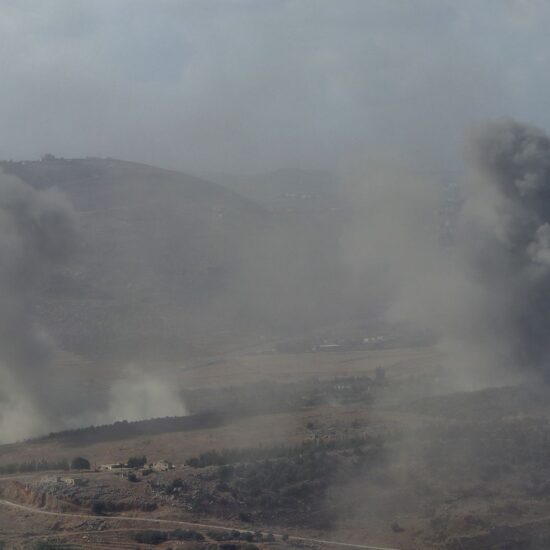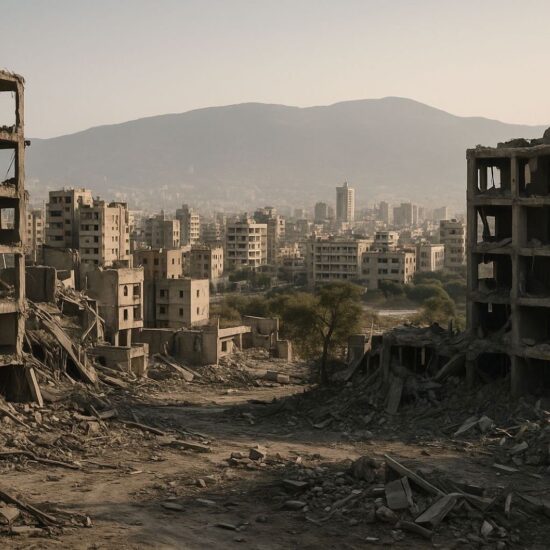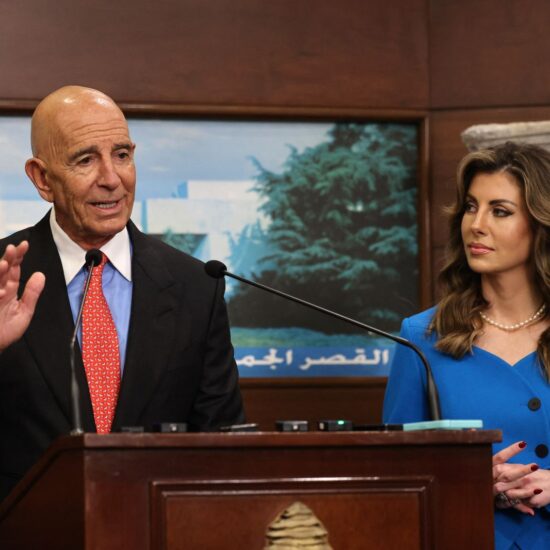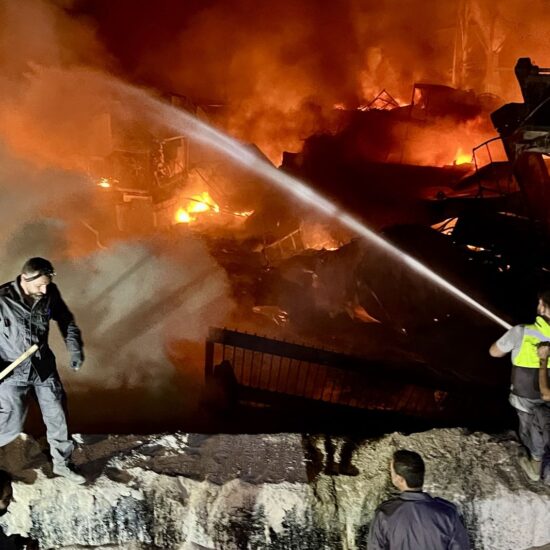
Over the past three months, food prices have been on a relentless upward march, climbing by more than 20% year-on-year and leaving Lebanese consumers wondering if their next meal will require a bank loan. But don’t worry, the Ministry of Economy seems to have mastered the art of selective hearing, turning a cold shoulder to the price hikes as if they were some distant rumor rather than the harsh reality on every Lebanese table. Blame it all on the Iran Israel war is the favorite narrative around
It’s truly heartwarming to watch Lebanon’s political junta stumble upon the term “Strait of Hormuz” as if it were some exotic new jargon in international politics. One might think this narrow waterway—through which nearly a third of the world’s seaborne oil flows—would be a headline topic in Beirut’s corridors of power, especially given Lebanon’s precarious economic state. But no, apparently the idea that closing this strategic chokepoint could send shockwaves through Lebanon’s economy is too complex a concept for the political elite to grasp.
Let’s break it down for them: the Strait of Hormuz handles about 25% of global oil exports, including crucial supplies from Saudi Arabia, the UAE, Iraq, Kuwait, Qatar, and Iran itself. Last year alone, Saudi Arabia moved 5.5 million barrels per day through this strait, accounting for 38% of total crude flows there. Should Iran decide to close it—something they’ve threatened amid the Israel-Iran conflict—the global oil price could spike to $130 per barrel or even higher, reminiscent of the 1970s oil shocks. The Strait is the only maritime outlet to the Indian Ocean for Persian Gulf nations. Any closure would directly affect oil shipments from Iran, Saudi Arabia, Kuwait, Iraq, Bahrain, Qatar, and the UAE, posing a grave threat to global energy supplies.
Now, here’s the kicker for Lebanon’s “leaders”: Lebanon’s electricity grid is entirely dependent on imported fuel oil, mainly coming through routes vulnerable to disruptions in the Strait of Hormuz. A closure or even a serious threat would likely trigger a complete electricity blackout in Lebanon, on top of soaring inflation and skyrocketing costs for basic goods. Oil price surges to $100 or beyond could push electricity bills up by 30 to 50%, with ripple effects across the economy.
Profiteering and/or inflation ?
However, food prices and inflation has been skyrocketing in the last months. If you’ve recently tried to buy groceries in Lebanon, you probably noticed that your wallet is getting a lot lighter—and not because you’re suddenly eating more. Over the past three months, food prices have been on a relentless upward march, climbing by more than 20% year-on-year and leaving Lebanese consumers wondering if their next meal will require a bank loan. But don’t worry, the Ministry of Economy seems to have mastered the art of selective hearing, turning a cold shoulder to the price hikes as if they were some distant rumor rather than the harsh reality on every Lebanese table. Blame it all on the Iran Israel war is the favorite narrative around.
According to official figures, food inflation in Lebanon hit 21.37% in March 2025, up from 20.5% in February, and edged even higher to 21.4% in April and May. Meanwhile, the overall Consumer Price Index (CPI) hovered around 7,200 points in March, with the inflation rate easing slightly to 14.2% in March from 15.6% in February—but don’t let that fool you. The devil is in the details: food prices continue to surge relentlessly, far outpacing the general inflation rate and squeezing household budgets tighter than ever.
What’s driving this relentless hike? Well, let’s just say profiteering has become a national sport. As supply chains creak under economic pressure and currency volatility, some merchants have found it easier to jack up prices rather than lower their profit margins. However the favorite narrative is to blame it on Iran Israel war. The Ministry of Economy’s response? A masterclass in indifference. Instead of cracking down on price gouging or providing relief to struggling families, officials seem content to pretend that soaring food prices are just a natural market phenomenon—something to be observed from a distance, preferably with a cup of coffee and no urgency whatsoever.
Regional disparities only add to the irony. In February 2025, the Market Food Price Index (MFPI) showed sharp monthly inflation in several governorates: El Nabatieh saw an 11% increase, driven by massive price jumps in fruits (+26%), fats and oils (+34%), and poultry (+10%). The North followed with a 5% rise, fueled by a 22% surge in fruits and 8% in vegetables. Meanwhile, some regions like South Lebanon even saw slight price drops in cereals and pulses, but that’s hardly a consolation for the average consumer struggling to keep up.
But how real is the closure threat?
According to Hani Bohsali, President of the Lebanese Syndicate of Food Importers, there has been a lot of talks about this possibility however as food supplies and commodities are concerned the strait of Hormuz is not strategic. The supply of energy is mostly paramount there, he said in an interview with NOW Lebanon. The rush of demand on fuel and related derivatives might be a concern for the market but not directly on food imports, he added. This will reflect negatively on the transportation cost and henceforth the consumer prices, he said. It is too early to be adamant on the impact of the closure of the strait of Hormuz, if this will occur, he quoted.
On the issue of prices of commodities is concerned , there has not been any effect of the current war on those prices all over in international market , he said
It seems that the markets are downplaying those risks; he added. There is definitely no economic reason to see an increase in prices in local markets, beyond the normal fluctuations, he underlined. The supply of commodities is constant as the Beirut Airport activity has not been disrupted, he said. There is no risk until now on the food imports supply, he concluded.
Food (in)security
But don’t expect this to be a priority for the political class. While Lebanon faces a trade deficit exceeding $2 billion, a tourism collapse costing up to $1.35 billion, and a potential $2 billion hit to exports, the political junta seems far more interested in ignoring these realities than addressing them. The fact that Lebanon’s food and fuel stocks, though currently stable, remain highly vulnerable to regional conflict barely registers on their radar. Meanwhile, global shipping insurance premiums and freight costs have already surged due to the heightened risk in the Strait, further inflating prices for imported goods that Lebanon desperately needs. Yet, the political leadership continues to treat the Strait of Hormuz like a mysterious buzzword rather than a critical artery whose closure could plunge Lebanon into deeper economic chaos.
The escalation of the Israel-Iran conflict has delivered a severe blow to Lebanon’s already fragile trade and economy. Instability in the region has triggered a sharp reduction in trade activity, as businesses scale back imports, limit inventories, and adopt a cautious approach in anticipation of supply chain disruptions and sudden price hikes. Lebanon, heavily reliant on imports and external capital inflows, is particularly vulnerable to any closure or delay in key maritime routes such as the Red Sea or the Strait of Hormuz, which directly threatens the timely delivery and affordability of essential goods.
Currently, Lebanon’s food stockpiles are estimated to last about three months, but the situation remains precarious. Any further escalation or prolonged closure of maritime routes could quickly lead to shortages and additional price spikes. The ongoing conflict has also delayed critical economic reforms, risking further international isolation and the loss of much-needed external support. In sum, the Israel-Iran conflict has placed Lebanon’s trade and economy under acute stress, compounding existing vulnerabilities and threatening to push the country deeper into crisis unless stability is restored and trade routes are safeguarded.
Figures of trade
Lebanon’s trade deficit may have modestly narrowed to $2.21 billion by early 2025, but who’s counting when the country’s economy is basically a sinking ship? With trade accounting for a staggering 129% of GDP, you’d think this would be headline news worthy of urgent action. Yet, the political junta seems blissfully unconcerned, treating the collapse in tourism, the halving of exports, and the hemorrhaging of billions in foreign investment and remittances as nothing more than background noise. After all, why worry about losing up to $1.35 billion in tourism revenue or a potential $2 billion hit to exports when there are far more pressing matters to ignore? Lebanon’s economic freefall is clearly the last thing on their agenda.
According to the Lebanese Customs Administration, Lebanon’s cumulative trade deficit narrowed by 3.16% year-over-year (YoY), reaching $2.21 billion by February 2025. This improvement was driven by a cumulative 41.31% YoY surge in exports by February 2025, which outpaced the cumulative 4.08% YoY rise in imports during the same period.
The top three import destinations in 2025 up till February were China, Egypt, and Greece, accounting for 10.8%, 10.34%, and 9.35% of the total value of imports, respectively. The top imported products were mineral products (31.12%) at $882 million, pearls, precious stones, and metals (10.06%) at $285 million, and products of the chemical or allied industries (8.65%) at $245 million.
Lebanon’s cumulative trade deficit down by 3.16% YoY to $2.21B by February 2025. On the exports side, the top three destinations in 2025 up till February were Switzerland, United Arab Emirates and United States capturing respective shares of 30.19%, 14.7% and 4.31% of the total value of exports. The top exported products were pearls, precious stones, and metals (42.97%) at $269 million, base metals and articles of base metal (16.13%) at $101 million, and prepared foodstuffs, beverages, and tobacco (10.54%) at $66 million.
The sharp rise in exports likely signals a rebound in business activity across multiple regions following the November 27, 2024, ceasefire with Israel. While Israel has continued to breach the agreement, these disruptions have remained localized, allowing broader commercial operations to resume, expanding export capacity, and driving export growth.
A significant portion of the recent export growth can be attributed to a 126% cumulative increase in exports processed via Rafic Hariri International Airport, reaching $296 million by February 2025. This surge likely reflects growing confidence in the airport’s management, which has implemented enhanced security protocols and stricter oversight, reinforcing its reliability as a trade hub. Additionally, the consistent assurances of airport security have played a crucial role, particularly as exporters seek alternative routes amid persistent risks in the Red Sea region.
More disruptions
Tourism, a major source of foreign currency for Lebanon, has suffered a dramatic collapse, with mass cancellations and flight suspensions projected to cause financial losses between $300 and $500 million for the summer season alone. If the conflict drags on, losses in tourism receipts could reach as high as $1.35 billion. The war has also led to a significant reduction in hard currency inflows from foreign direct investment, remittances, and exports. Projections indicate that Lebanon could lose between $105 and $210 million in foreign direct investment over six to twelve months, while remittance inflows—vital for many Lebanese households—could drop by as much as $1.5 billion over the next year. Meanwhile, the country’s manufacturing and export sectors are at risk of contracting by more than 50% if the conflict persists, potentially resulting in a $2 billion loss in export value.
Rising global oil prices, fueled by fears of regional supply disruptions, are already impacting Lebanon’s domestic markets. Given the country’s high dependence on imported fuel and goods, these increases are quickly translating into higher local costs and accelerating inflation, further eroding the purchasing power of ordinary citizens. Lebanon’s chronic economic crisis—characterized by currency collapse, banking restrictions, and political paralysis—has left it with little resilience to absorb such shocks. With GDP now just 40% of its 2018 level and capital inflows accounting for nearly 90% of GDP, any disruption in port operations or import channels directly threatens the livelihoods of remittance-dependent families and the broader population. And the trend goes on!
Maan Barazy is an economist and founder and president of the National Council of Entrepreneurship and Innovation. He tweets @maanbarazy
The views in this story reflect those of the author alone and do not necessarily reflect the beliefs of NOW








